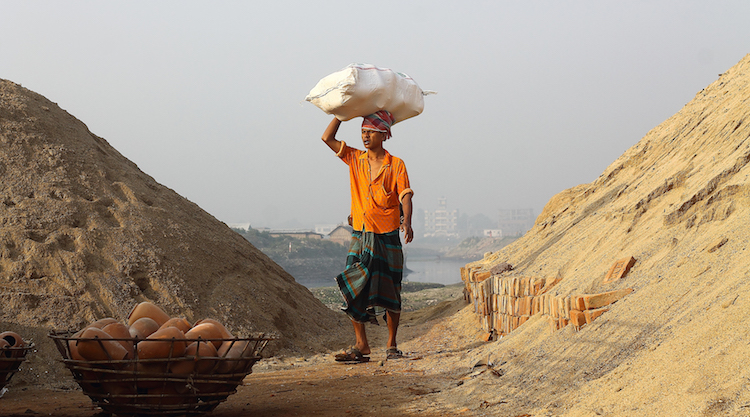
By Phil Harris
ROME (IDN) – Amid persistent strong uncertainty about the global employment scenario, working poverty – particularly in emerging countries – is expected to increase as unemployment rises and the gender gap in the labour force increases.
So much for the optimism expressed when the United Nations Sustainable Development Goals (SDGs) were launched in September 2015 to promote “sustained, inclusive and sustainable economic growth, full and productive employment and decent work for all” and achieve “gender equality and empower all women and girls”.
The forecast comes in this year’s World Employment Social Outlook – Trends 2017 report released by the International Labour Organisation (ILO) at the beginning of January, around the same time as Oxfam was reporting that “just eight men own the same wealth as the 3.6 billion people who make up the poorest half of humanity”.
Although these figures have been contested, for example by The Economist, there is no doubt that something is rotten in the state of social equality, and this something is partly to be found in the inability of the global system to provide not only decent employment but employment full stop.
The ILO report notes that global GDP growth hit a six-year low in 2016, and the forecasts for growth for 2017 have continually been revised downwards over recent years (from over 4.6 per cent forecast in 2012 to 3.4 per cent forecast in 2016).
According to the ILO, this raises question marks over the ability of the economy to “generate a sufficient number of jobs, improve the quality of employment for those with a job, and ensure that the gains of growth are shared in an inclusive manner.”
The ILO expects global unemployment levels and rates to remain high in the short term, as the global labour force continues to grow. In particular, the global unemployment rate is expected to rise and there will be 3.4 million more unemployed people globally (bringing total unemployment to just over 201 million in 2017).
And while the global unemployment rate is expected to hold relatively steady in 2018, the number of people in search of employment will not be matched by job creation, resulting in an additional 2.7 million unemployed people globally.
According to the ILO, the increase in unemployment levels and rates in 2017 will be driven by deteriorating labour market conditions in emerging countries and the number of unemployed people in emerging countries is expected to increase by approximately 3.6 million between 2016 and 2017. Unemployment levels in developing countries are also expected to increase in 2017.
On the other side of the coin, being employed is not necessarily the panacea. The ILO says that for many developing and emerging countries “chronic poor-quality employment … and working poverty” are taking centre stage.
Workers in vulnerable forms of employment are typically subject to high levels of precariousness, such as limited access to contributory social protection schemes, and the ILO forecasts that vulnerable forms of employment are expected to remain above 42 per cent of total employment in 2017, accounting for 1.4 billion people worldwide.
“Almost one in two workers in emerging countries are in vulnerable forms of employment, rising to almost four in five workers in developing countries. As a result, the number of workers in vulnerable forms of employment is projected to grow globally by 11 million per year.”
At the same time, the situation is aggravated by a slowdown in reduction of the numbers of people affected by working poverty – that is workers whose incomes fall below the poverty line.
According to the ILO, working poverty remained a problem in 2016, with nearly half of workers in Southern Asia and nearly two-thirds of workers in sub-Saharan Africa living in extreme or moderate working poverty (living on less than 3.10 dollars a day in purchasing power terms).
While the absolute number of working poor has been declining over recent years, the rate of that reduction is slowing, and in developing countries the number is on the rise.
Progress in developing countries has been too slow to keep up with employment growth and as a result the number of workers earning less than 3.10 a day over the next two years is expected to increase by around 3 million per year in developing countries.
Compounding this picture are disparities, particularly gender disparities, in labour market opportunities, which cut across and persist in a number of areas across population groups.
The ILO notes that vulnerable forms of employment are consistently higher for women across Africa, Asia and the Pacific and the Arab States.
In Northern Africa, for example, women in the labour force will be twice as likely as men to be unemployed in 2017, and the gap is even starker for women in Arab countries, who are more than twice as likely to be unemployed than men. In Southern Asia, almost 82 percent of women were in vulnerable employment in 2016, compared with just over 72 percent of men.
At the same time, the ILO warns that global uncertainty and the lack of decent jobs are two of the factors behind social unrest and migration in many parts of the world.
Between 2009 and 2016, the share of the working-age population willing to migrate abroad increased in almost every region of the world, except for Southern Asia, Southeast Asia and the Pacific. The largest rise took place in Latin America, the Caribbean and the Arab States.
As the world’s eight richest men look down on the poorest half of humanity, a social time-bomb is ticking away. [IDN-InDepthNews – 20 January 2017]
Photo: Worker in Dhaka, Bangladesh. Credit: Wikimedia Commons
IDN is flagship agency of the International Press Syndicate.











